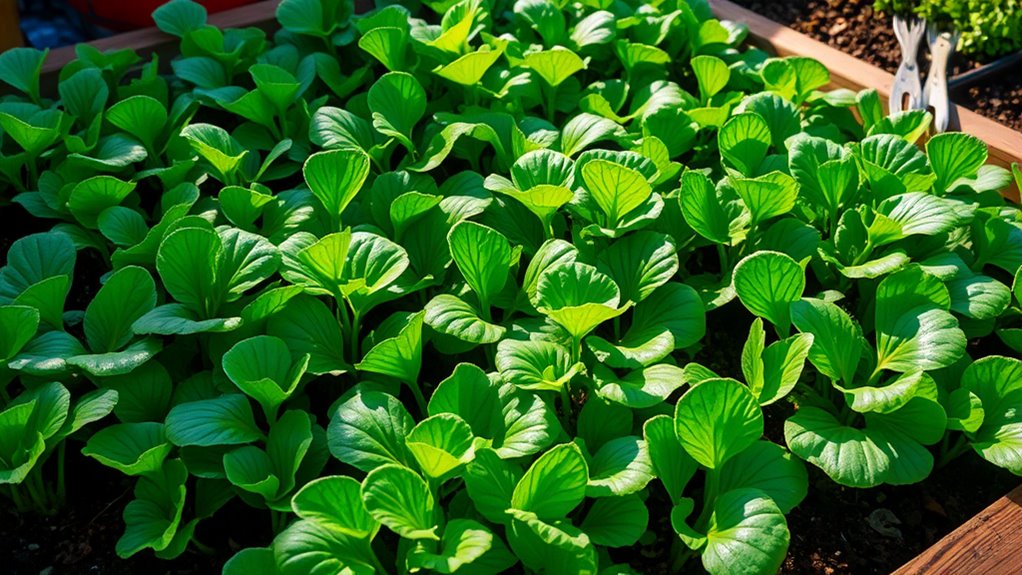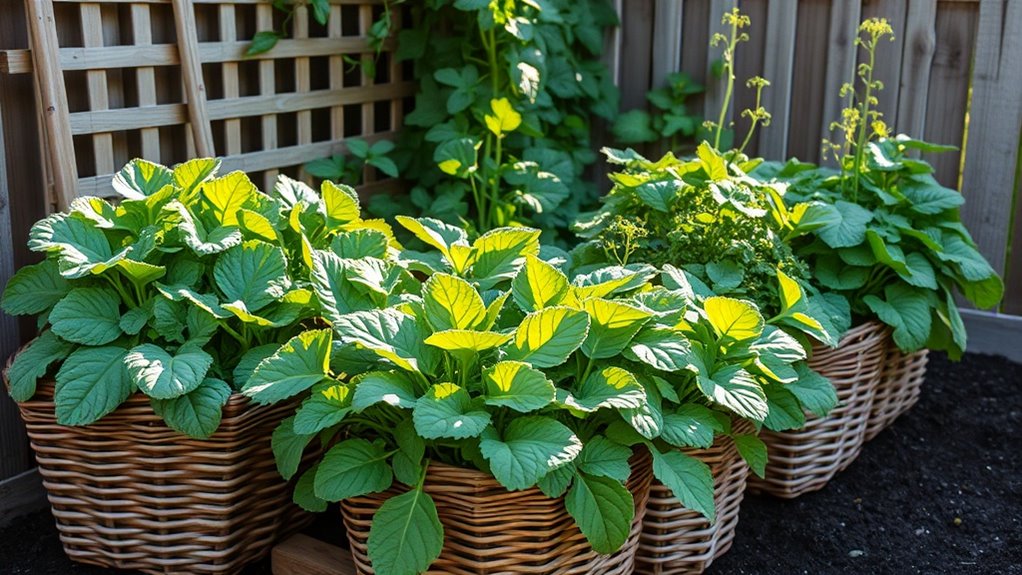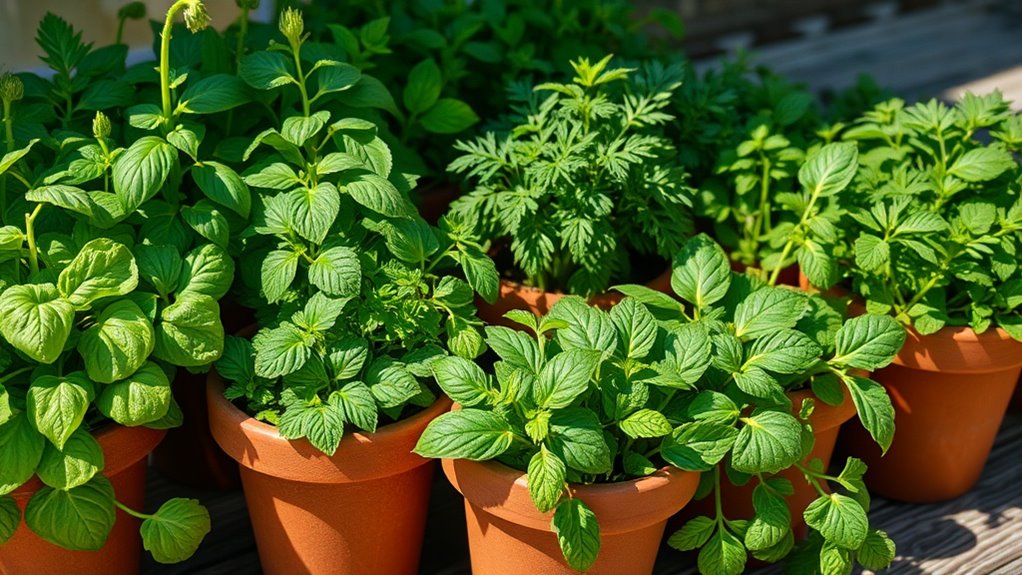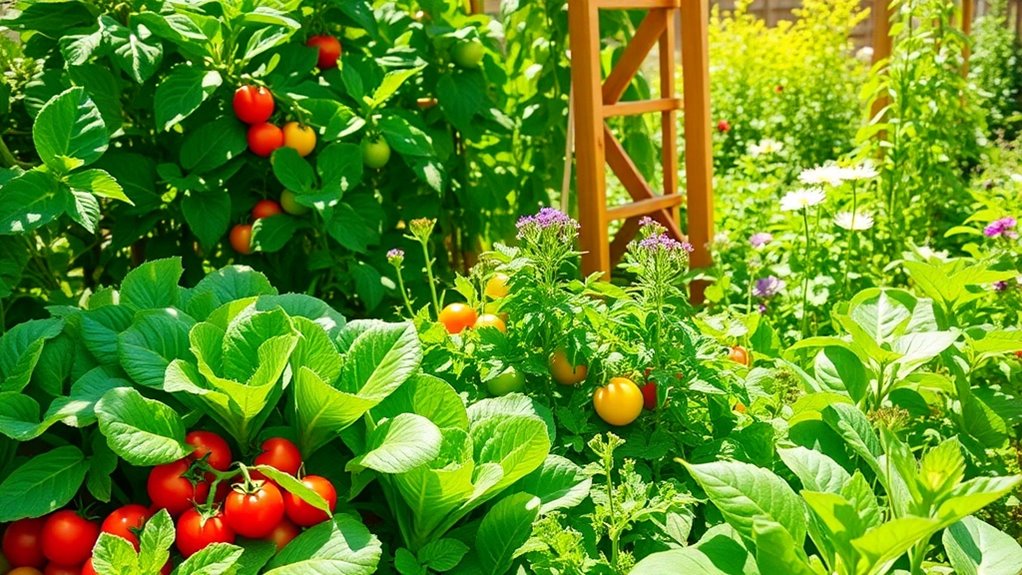Harvest Salad Greens in Just 2 Weeks With This Method
Growing your own salad greens can seem daunting, yet it’s surprisingly simple. With the right approach, you can enjoy fresh, homegrown greens in just two weeks. Imagine crisp arugula or spinach ready to elevate your meals. This method not only saves you money but also ensures your salads are nutrient-rich. Let’s explore how to set up your garden for quick success and enjoy that bountiful harvest sooner than you think.
Key Takeaways
- Choose fast-growing salad greens like arugula, spinach, or mesclun that mature in just two weeks.
- Prepare nutrient-rich soil by mixing in compost and ensuring proper aeration and drainage.
- Keep the soil consistently moist, watering early in the morning to avoid displacing seeds.
- Harvest outer leaves using clean scissors to encourage new growth and extend the harvest period.
- Use a cut-and-come-again approach to ensure a continuous supply of fresh greens throughout the season.
Choosing the Right Salad Greens
When it comes to choosing the right salad greens, what factors should you consider?
First, think about your climate—some fast salad greens thrive in cooler weather, while others prefer warmth.
Next, consider your taste preferences; options like arugula, spinach, or mesclun can spice up your salads.
Also, pay attention to growth time; if you want quick results, look for varieties that mature in just a couple of weeks.
Finally, think about the space you have available—some greens can grow in small containers. Additionally, selecting the right fast salad greens can enhance your gardening success and ensure a bountiful harvest.
Preparing Your Growing Space
To grow healthy salad greens, you need to start with the right location and soil.
Choose a spot that gets plenty of sunlight and has good drainage.
Then, prepare your soil by mixing in organic matter to create a nutrient-rich environment for your greens to thrive. Additionally, consider using container gardening techniques to maximize your growing space and ensure proper drainage.
Selecting the Right Location
Choosing the right location for your salad greens can make all the difference in their growth and flavor.
Look for a spot that receives at least 6 to 8 hours of sunlight daily, as this helps your greens thrive.
Ensure the area has good air circulation to prevent mold and pests.
If you’re growing in containers, consider a location that’s easily accessible for regular watering and harvesting.
Avoid areas with heavy foot traffic or competing plants, as they can hinder your greens’ growth.
Soil Preparation Essentials
Soil is the foundation of your salad greens, and preparing it properly can significantly impact their growth. Start by testing your soil’s pH and nutrient levels. Amend with organic matter like compost to boost fertility.
| Step | Action | Purpose |
|---|---|---|
| Test Soil | Use a pH kit | Ensure optimal conditions |
| Add Compost | Mix in 2-3 inches | Improve nutrients and drainage |
| Tiller Soil | Aerate to 12 inches deep | Enhance root growth |
Selecting Quality Seeds
When you’re ready to grow salad greens, selecting quality seeds is crucial for a successful harvest. Start by choosing varieties suited to your climate, like arugula, lettuce, or spinach. Look for seeds from reputable suppliers, ensuring they’re fresh and organic if possible. Check the packaging for germination rates and expiration dates; higher germination rates mean better chances of a bountiful crop. Don’t forget to consider your taste preferences and how each variety grows. By investing in quality seeds, you’re setting the stage for flavorful, vibrant greens that’ll thrive in just a couple of weeks. Additionally, consider incorporating a salad garden into your balcony to maximize your space for growing greens. Happy planting!
Planting Techniques for Quick Growth
To ensure your salad greens grow quickly, start with the right seeds tailored for your climate. Next, focus on preparing your soil to create a nutrient-rich environment, and don’t forget to establish optimal watering practices. Additionally, selecting container types that promote healthy drainage can enhance growth. With these techniques, you’ll set the stage for a bountiful harvest in no time!
Seed Selection Tips
Choosing the right seeds is crucial for your salad greens to flourish quickly.
Start by selecting varieties known for rapid growth, like arugula or baby spinach.
Here are some tips to help you choose wisely:
- Opt for heirloom or non-GMO seeds for better flavor and resilience.
- Check germination rates on the seed packet to ensure a good yield.
- Consider your growing conditions—some seeds thrive in cooler temperatures, while others prefer warmth.
- Look for disease-resistant varieties to minimize potential setbacks.
With the right seeds, you’ll be well on your way to a bountiful salad harvest in just two weeks!
Soil Preparation Essentials
Preparing your soil is essential for a thriving salad garden, as it sets the foundation for healthy growth.
Start by clearing any weeds, rocks, or debris from your planting area.
Loosen the soil using a garden fork or tiller, ensuring it’s aerated and well-drained.
Mix in organic matter like compost to enrich the soil with nutrients, which helps your salad greens grow quickly.
Aim for a pH level between 6.0 and 7.0, as most salad greens prefer this range.
Finally, level the soil to create an even surface, making it easier to plant your seeds effectively.
Happy gardening!
Optimal Watering Practices
Effective watering practices are crucial for promoting rapid growth in your salad greens.
You’ll want to strike a balance, ensuring your plants receive just enough moisture without overwatering.
Here are some tips to keep in mind:
- Water early in the morning to reduce evaporation.
- Use a gentle spray or drip irrigation to avoid disturbing the soil.
- Check soil moisture regularly; aim for damp, not soggy.
- Consider mulching to retain moisture and suppress weeds.
Optimal Watering Practices
Watering your salad greens properly is crucial for their health and flavor. Aim to keep the soil consistently moist but not soggy.
Water in the morning, allowing leaves to dry before evening, which helps prevent diseases. Use a gentle spray or drip irrigation to avoid displacing seeds.
Check the top inch of soil—if it’s dry, it’s time to water. Be mindful of weather conditions; hotter days might require more frequent watering. Additionally, understanding ideal watering schedules can help you optimize your watering routine for better plant health.
Mulching can help retain moisture. With these optimal practices, your greens will thrive, ensuring a bountiful harvest in just two weeks!
Providing the Right Light Conditions
While your salad greens need consistent moisture, they also thrive under the right light conditions.
Make sure to provide optimal lighting to boost growth and flavor.
Here are some tips:
- Natural sunlight: Place your greens in a spot where they can soak up at least 6 hours of sunlight daily.
- Grow lights: If you’re growing indoors, consider using full-spectrum LED grow lights for effective results.
- Light duration: Keep lights on for 12-16 hours a day to mimic natural conditions.
- Avoid direct heat: Don’t expose your greens to excessive heat from lights; they prefer a cool, bright environment.
Additionally, many salad greens can grow quickly when provided with sufficient light exposure, ensuring you can enjoy your harvest in just a couple of weeks.
With these tips, your greens will flourish!
Harvesting and Enjoying Your Greens
As your salad greens reach maturity, the excitement of harvesting and enjoying them begins!
Start by picking the outer leaves first; this encourages new growth and prolongs your harvest.
Use clean scissors or garden shears to avoid damaging the plants.
Aim for early morning or late afternoon for the best flavor and crispness.
Once harvested, rinse your greens gently with cool water to remove any dirt, then pat them dry.
Enjoy your fresh greens in salads, sandwiches, or smoothies.
Don’t forget to experiment with dressings or toppings to enhance their taste—your homegrown greens deserve to shine! Additionally, consider incorporating cut and come again greens into your garden for a continuous supply throughout the season.





